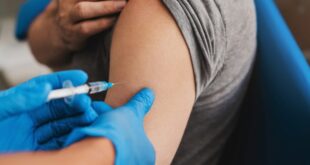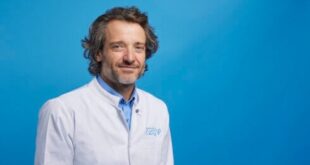THE family with the ‘worst luck in the world’ has been saved by a In Spain, a pioneering treatment was developed.
Ava Lagenhop and her siblings Olivia, Landon and Landon Lagenhop each carry a rare and deadly disease. This is a condition that affects only one person in a thousand.
Alicia Lagenhop, and her husband, carry the gene that causes Leukocyte Adhesion Deficiency-1. This increases the risk of a child being born to these parents developing the disease by 25%.
READ MORE: Afraid of Needles?Researchers in Spain could have the solution


LAD-1, a potentially life-threatening condition, causes painful ulcers and continuous infections of the soft tissues, including those on the mouth, skin, and respiratory organs.
White blood cells are affected by the genetic disorder and become defective, unable to combat microbes.
The Lagenhop siblings, along with six other children, have regained their normal lives thanks to an innovative treatment.
Researchers at Madrid’s Centre for Energetic, Environmental and Technological Research CIEMAT began studying the disease 15 years ago, under the leadership of Juan Antonio Bueren and Elena Almarza.
The New England Journal of Medicine, published on April 30, has published the results of these tireless efforts.
Bueren says that “70%” of LAD-1-serious patients die before their third birthday.
The new treatment aims to correct this after successfully curing illness in rats. It does so by genetically modifiying cells and introducing the correct gene in the body.
Rocket Pharma, a US-based pharmaceutical company, purchased the rights and conducted human trials.
READ MORE: Spanish researchers discover a ‘fat burning’ mechanism to fight obesity


CIEMAT
Lagenhops is a part of this trial, which involves extracting bone tissues, correcting the genes, and reintroducing these into the body.
Bueren explained, “From the clinical perspective, everyone is back in school, leading a normal life. They are doing great.”
The trials took place in Madrid’s Hospital Niño Jesus, the University of California (where the Lagenhops were treated) and University College London.
Julian Sevilla, a doctor in Madrid who was treating a Turkish girl, said that the treatment had gone “phenomenally, spectacularly. There have been no complications, and we’ve shown now that this treatment can be a cure.”
After treatment, the children in the study are followed up for two more years to make sure that the symptoms do not return.
Mother of three of the ‘cured’ children, Alicia Lagenhop, said: “We felt like we had to climb a mountain everyday. Each fever and each ulcer was frightening. “We were always afraid of the worst.”
While Bueren is hopeful, he says the treatment cannot yet be considered a ‘complete cure’ and families will have to wait longer to be sure it has worked.
READ MORE: Spain becomes world leader in medical research – this is what it achieved in 2024
 Costa News Spain Breaking News | English News in Spain.
Costa News Spain Breaking News | English News in Spain.





